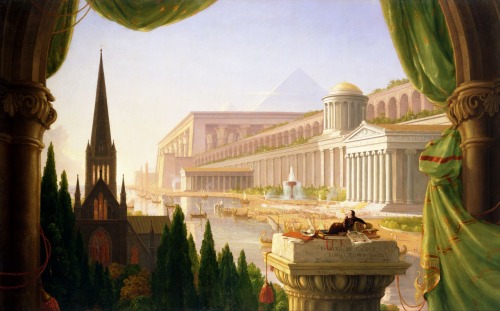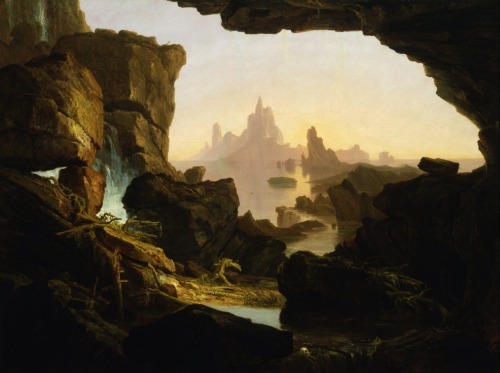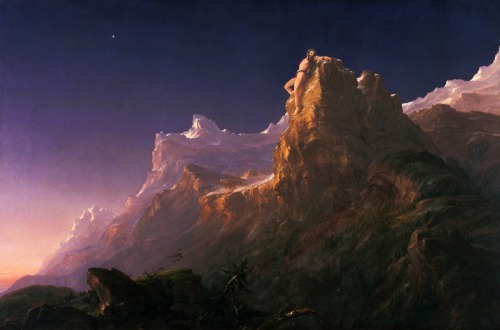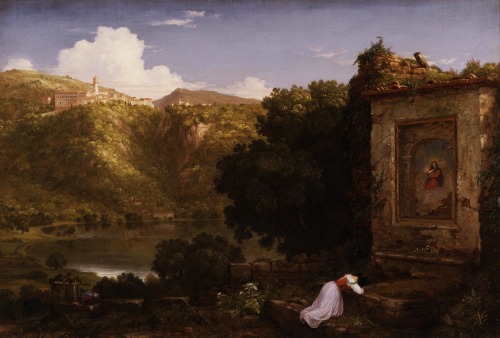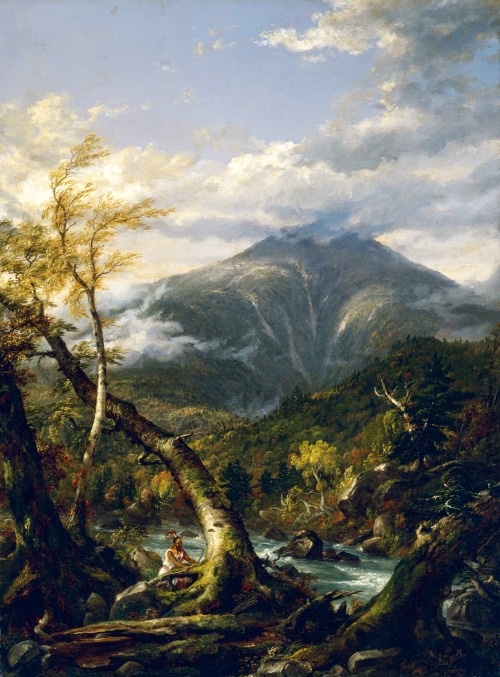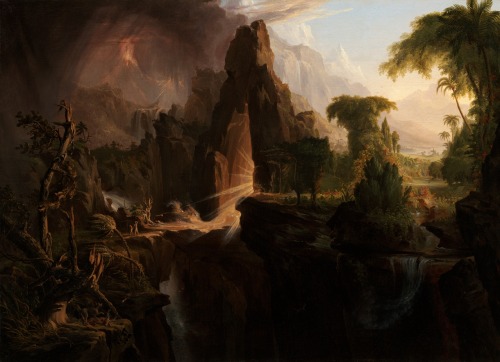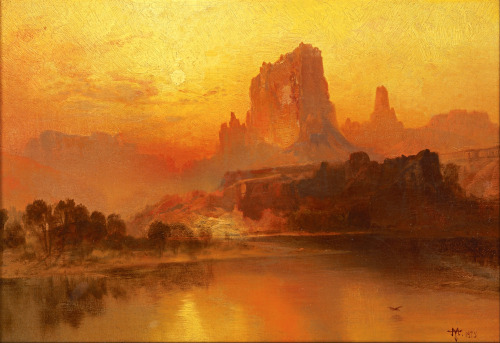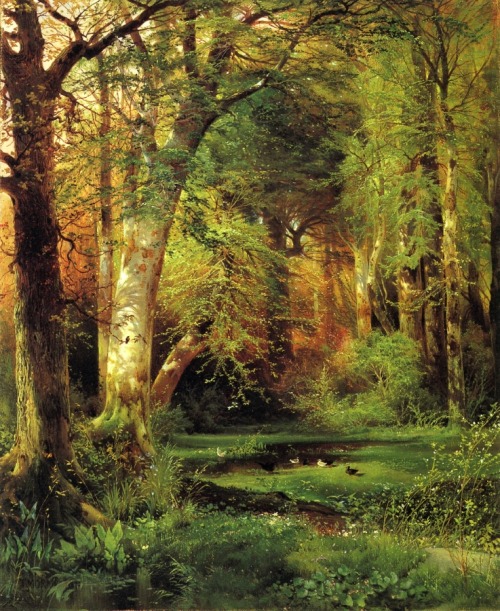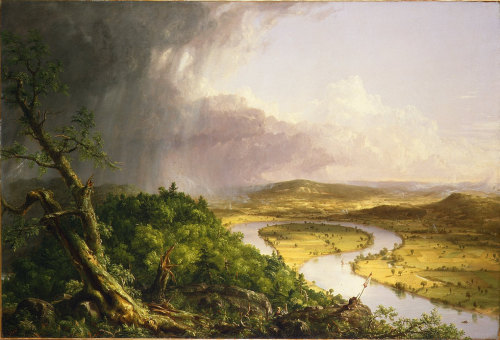#hudson river school
Thomas Cole (1801–1848, United States)
Mythological and idealised landscapes
Thomas Cole was an American artist known for his landscape and history paintings. He is regarded as the founder of the Hudson River School, an American art movement that flourished in the mid-19th century. Cole’s work is known for its romantic portrayal of the American wilderness.
Post link
Albert Bierstadt | Among the Sierra Nevada Mountains, California
California, 1868
Some Hudson River artists used the landscape genre as an allegorical vehicle to address moral and spiritual concerns. Albert Bierstadt (1830–1902) traveled west in 1858 and produced many paintings depicting the Rocky Mountains, Yosemite Valley, and other dramatic locales. These works, such as Among the Sierra Nevada Mountains, California, present breathtaking scenery and natural beauty. This panoramic view (the painting is 10 feet wide) is awe-inspiring. To underscore the almost transcendental nature of this scene, Bierstadt depicted the sun’s rays breaking through the clouds overhead, which suggests a heavenly consecration of the land. That Bierstadt’s focus was the American West is not insignificant. By calling national attention to the splendor and uniqueness of the regions beyond the Rocky Mountains, Bierstadt’s paintings reinforced the idea of Manifest Destiny.
(Read More Now does not work here)
This popular 19th-century doctrine held that westward expansion across the continent was the logical destiny of the United States. As John L. O’Sullivan (1813–1895) expounded in the earliest known use of the term in 1845, “Our manifest destiny [is] to overspread the continent allotted by Providence for the free development of our yearly multiplying millions.” Paintings of the scenic splendor of the West helped to mute growing concerns over the realities of conquest, the displacement of Native Americans, and the exploitation of the environment. It should come as no surprise that among those most eager to purchase Bierstadt’s work were mail-service magnates and railroad builders—entrepreneurs and financiers involved in westward expansion. (x)
Post link
Day 457: Thomas Moran
Thomas Moran was born in 1837 in Bolton, Lancashire to two handloom weavers. The rapid industrialization of nineteenth century England soon mechanized the weaving process and forced Thomas Moran’s parents out of their jobs, at which point the whole family was moved to Kensington, Philadelphia, just outside of Philadelphia.
At the age of sixteen, Thomas Moran became an apprentice to a Philadelphia wood engraving firm, Scattergood & Telfer. It was in this position that he began to paint and draw seriously, working diligently on his skills as both a watercolorist and an illustrator. In this he had help and support from his brother Edward, who was an associate of the marine painter James Hamilton (From Medicine Man Gallery).
Post link
Massachusetts, after a Thunderstorm -The Oxbow, 1836. Thomas Cole. Oil on canvas.
….Long known as ‘The Oxbow,’ this work is a masterpiece of American landscape painting, laden with possible interpretations.
Post link

Thomas Cole (1801-1848)
“A Pic-Nic Party” (1846)
Oil on canvas
Hudson River School
Located in the Brooklyn Museum of Art, New York City, New York, United States


